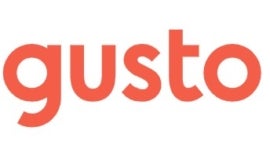If you need email, but prefer to use something other than Gmail, what are your options? I have five to share with you.
Although there are some end-users (millennials, are you listening?) who shun email as an important form of communication, if you own, run or work within a business, email is a necessary means of collaboration and communication.
SEE: Feature comparison: Time tracking software and systems (TechRepublic Premium)
You cannot escape that reality. Run as hard and fast as you like, but email is nearly impossible to avoid if you plan to work in nearly any sector of business.
Once you’ve accepted that, it’s time to decide what email service or client you’ll use. This, of course, depends on your purpose. You might work for a business that requires you to use a specific service (or an internal email system). But even if, say, your company uses Google Workspaces, you’re not stuck using the Gmail web-based UI. And if you own your own startup, you have plenty of options.
I want to introduce you to five options that can either be used in place of Gmail or used to connect to Gmail (for a more traditional desktop client feel).
Zoho Mail

Our first alternative service has been around for some time and has proven itself to be one of the best contenders to serve as a Gmail replacement. With a very well-designed UI, Zoho Mail makes the navigation of the entire Workplace simple.
Here, you’ll find quick access to email, Calendar, Tasks, Notes, Contacts, Bookmarks, folders and a number of other applications (such as Writer, Sheets, Show, WorkDrive, and Meeting). Zoho is about as close to a drop-in replacement as you’ll find for Gmail (and Google Workspace). You can even get a custom domain email for your business, 24×7 support, built-in migration from IMAP/POP or Exchange, collaboration tools, filters, advanced search, out of office, signatures, user/group management, email policies, two-factor authentication, plenty of integrations, email recall, offline access, domain aliases, and mobile apps for Android and iOS.
Zoho pricing ranges from a limited free plan to the WORKPLACE plan starting at $3/user/month. Although I’ve been using Gmail for years, I often consider making the migration to Zoho Mail because it’s that good.
Proton Mail

If you’re looking for an email service that places a premium on security, Proton Mail might be just what you’re looking for. Proton Mail includes end-to-end encryption, a no-logs policy, CSV contact import, self-destructing emails, over 20 supported languages, multiple layouts and themes, quick filters, keyboard shortcuts, migration tools (from sources like Gmail, Outlook, and Yahoo), free VPN, and two-factor authentication.
The Protonmail UI will immediately invoke feelings of Gmail, and gives you quick access to Mail, Calendar, Drive (which is now in beta), and the VPN. Other features that set Proton Mail apart from other offerings are built-in calendar security, and password-protected emails to non-Proton users. Although Proton-to-Proton mail is always encrypted, if you’re emailing sensitive information to a non-Proton user, you’ll want to take advantage of the Encrypt for non-ProtonMail users by clicking the lock icon in the compose window and then setting a password. This non-ProtonMail user encryption is done on a per-user basis, so you’ll have to do it for every non-ProtonMail user email you send.
The ProtonMail pricing ranges from a free account up to the Visionary account, which is about $35/month for six users.
Tutanota

Although I am unsure how to pronounce the name, Tutanota is Latin for “safeguarded.” To anyone who gets tired of receiving ads in their Gmail inbox, you’ll be glad to know that Tutanota does not bother with such things. The company makes all of its revenue from subscriptions and donations.
With Tutanota, you can send anonymous emails, work with encrypted calendars, use two-factor authentication, manage templates, create contact forms (premium feature), and even Whitelabel your sub-domain for custom notification emails (premium feature). Unlike ZohoMail and Proton Mail, Tutanota doesn’t include Google Workspace-like apps. This service is all about email and nothing more. That’s fine, especially if you’re only looking for a replacement service for Gmail and not the entire suite.
Tutanota prices range from a free account to a Teams account for about $4.50/per month with an approximate $2.30 charge for every extra user.
Thunderbird

And now we shift away from services to clients. Although these won’t replace Gmail as a service, they do make it possible to avoid the Gmail web-based interface (for those who prefer the traditional client/server approach).
Thunderbird has been my go-to email client of choice for over a decade. I’ve always found Thunderbrid user-friendly, reliable and stable. And given you can add as many accounts as you like (including Gmail), there’s no reason to not give it a try. And with the included Calendar tool, you’ll enjoy managing your Google calendar from the same interface.
Thunderbird features include easy-to-follow mail account setup wizard, encryption, one-click address book, attachment reminder, tabbed email, quick filters and search tools, message archives, smart folders, add-ons, phishing protection, and built-in spam detection. All of this comes in an open-source, free-to-use tool that can be installed on Linux, macOS and Windows.
Evolution

Evolution is a Linux-only groupware suite. Remember those single desktop tools that included email, calendar, contacts, tasks and memos? Evolution will remind you of the older Outlook desktop clients. Although the Evolution interface and feature list do seem a bit outdated, it is still very much a viable tool for those who want to connect to their Gmail accounts and prefer to use a desktop client over the web-based option.
Even better, with most modern Linux distributions (especially on the GNOME front), you can quickly configure Evolution to connect to your Google account through the Online Accounts section of the Settings tool. Evolution includes features like encryption, secure connections with SSL, TLS, and STARTTLS, filters, search, automatic spam filtering (via SpamAssassin), message marking and color-coding, certificate management, multiple account management, built-in spell checking, folder subscriptions, exchange support and offline usage.
Evolution might be a throw-back to the earlier days of email, but it’s still a fantastic option for those who prefer a Linux desktop and a client-based email tool.
Source of Article



